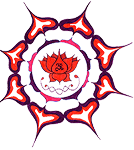
Urban Shaman?
By Aumdoc (Richard J. Clofine, D.O.)
The ancient practice of Shamanism can be studied from a modern cross-cultural perspective. The root of the word Shaman comes from northern Asia and means “he or she who knows.” Shaman’s around the world access information through non-ordinary and altered states of consciousness. They journey to worlds inhabited by spirits, deities, animal totems and plant teachers via these altered states for the benefit of an individual or community. Shamanic societies are quite varied and can look quite different. Within any one society there may be different types of shaman (specializing in plant healing or divination, for example). When comparing different shamanic societies, there are certain common core aspects to the practice that can be identified. This concept of ‘core shamanism’ was popularized by anthropologist Michael Harner’s book “The Way of the Shaman: A Guide to Power and Healing”, published in 1980.
One core aspect would be their ability to expertly communicate with spirits in non-ordinary reality, to take a ‘shamanic journey’ to other worlds. They easily travel between worlds, know the territory well and can be excellent guides. Shamanic skills include various rhythmic driving techniques such as drumming; chanting; music; song; movement and dancing. Other common aides to spirit flight include fasting, wilderness isolation, dieta’s (special plant diets), immersion in heat (saunas and sweat lodges) and the use of sacred plant medicines.
Shamans are initiated into their life’s work in varied ways. The path may one of blood lineage, or an individual may have shown certain temperaments and skills as a child or have been born under an auspicious sign or with a congenital mark. There are also those called to the practice by spirit, by their own doing, or through deep relationship to plant or other spirit teachers.
The initiation process can be difficult representing a mythic process of dying (shamanic dismemberment) and rebirth. It may be a psychological dismemberment (ego death) or involve a life threatening illness or injury (such as a lightening strike). Whether through a single life event, or via regular shamanic practice, this death and rebirth allows for complete personal deconstruction followed by reintegration in a new and different way. By integrating these experiences into everyday life, the shaman gains wisdom and practical knowledge to benefit themselves and their tribe.
Shamans have been called wounded healers. Their practice is about the practical day to day lives of the tribe, chopping bread and carrying water, so to speak. Americans often want to make this about spiritual growth and enlightenment. Indigenous shamanism includes sorcery and spells, nasty energetic dart slinging and other things that are not always beneficent. My advice is to give honor and respect to those who deserve it but don’t put any shaman on a pedestal, and... watch your back.
Fortunately, shamanic initiation and practice all occurs within the context of a society that has shamanism integrated into the core of its social context. The community forms a crucible, a container within which the shaman is forged and subsequently can practice. It all makes sense.
Modern America is not a shamanic culture and we have no traditional shamans. There is no crucible or container to hold the shamanic process, no safe haven of an understanding tribe. Today, in modern America, the rapidly growing interest in the shamanic worldview is manifest in the recent profusion of websites, books, travel, teachers and communities. This interest is often about individuals wanting to grow and develop their personal medicine. I am not referring here to my 4 years in medical school and 5 years of post-doctoral training, rather, I am speaking of the distinctly personal skills and talents that are the birth right of every individual. Each one of us has a different experience and way of voicing it; each one has a unique contribution to life’s song and we attract others who sing a life harmonious with our own intent. Definitely a global family! When we connect to our medicine we live in the present, we feel passionate, hopeful and we naturally develop deep stores of vitality.
Timothy White, former editor of Shaman’s Drum Magazine, describes these individuals as ‘shamanists’, rather than true shamans. I think this is a fine distinction. These are individuals who have practically adopted into their lives aspects of the shamanic worldview and skill set. This information proves useful in sanely navigating the modern world, for healing work and for creating a healthier self. Ayni is the quechua word for Sacred Reciprocity, with each other and with Mother Earth. Ancient skills and wisdom, cultivated properly, can bring fruit to the modern urban dweller.
Aumdoc (Richard J. Clofine, D.O.) is a practicing board certified physician who is a student of cross cultural shamanism. His 7 session teaching series on Urban Shamanism starts February 10, 2009 (and runs every other Tuesday night). His new healing, teaching and bodywork practice, Aumdoc’s Lotus Healing is located at www.HarmonyLearningCenter.org in Decatur. Complete information at www.Aumdoc.com; for appointments call Aumdoc at 770-633-4257.

![]()
Home ![]() Intro
Intro ![]() Aumdoc's Lotus Healing
Aumdoc's Lotus Healing ![]() Medicine Pages
Medicine Pages
Ritual & Ceremony ![]() Temple of Health Radio Show
Temple of Health Radio Show ![]() Links & References
Links & References
Events ![]() Divine
Light Farms
Divine
Light Farms

